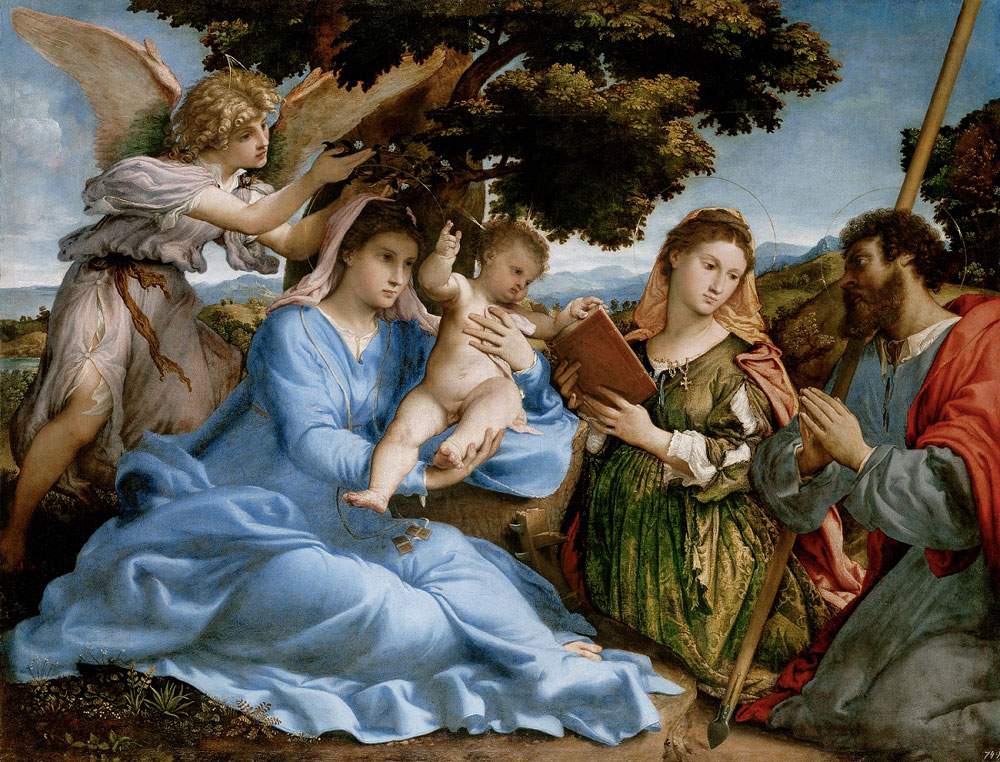Lotto's Sacred Conversation arrives on transfer to Venice from Kunsthistorisches Museum
From October 15, 2020, Lorenzo Lotto’s Sacra Conversazione, a masterpiece housed at the Kunsthistorisches Museum in Vienna, will arrive at the Gallerie dell’Accademia in Venice, kicking off the new project launched by the Venetian museum venue, A Masterpiece for Venice, in collaboration with Intesa Sanpaolo.
In the coming months, a number of extraordinary works of the Venetian Renaissance from major international museums will be displayed in the museum’s halls in rotation. A project therefore that will count loans of paintings that have left their original exhibition venue only on rare occasions.
The initiative was created with the intention of recovering international relations and relationships in a city strongly affected from the point of view of foreign visitors, recent calamities, and the Covid-19 pandemic, as well as reaffirming that international breath and propensity for dialogue that distinguishes the social and cultural dimension of Venice.
The first painting involved in this project is, as mentioned, the Sacred Conversation with Saints Catherine and Thomas, a work created by Lorenzo Lotto between 1526 and 1528. The public will be able to admire the masterpiece at the Gallerie dell’Accademia in Venice until January 27, 2021.
Then in the following months it will be the turn of a work from the Hermitage in St. Petersburg and another masterpiece from a prestigious international museum.
“Works of art,” said the director of the Gallerie dell’Accademia in Venice, Giulio Manieri Elia, “are a bridge that can foster knowledge and facilitate dialogue. The masterpieces chosen in partnership with the friendly museums were selected with this logic in mind: to dialogue with the museum’s heritage and at the same time encourage the reopening of relations with the international context at an unfavorable time. It seems to us the best contribution art can make at this difficult juncture.”
The Vienna Sacred Conversation lends itself to a dialogue with the Portrait of a Young Gentleman, another work by Lotto belonging to the Galleries.
On a sunny summer afternoon Mary, seated on the grass, supports the child standing on a stump. Her blue dress, broadly draped to ideally form a pyramidal structure, emphasizes the solemnity of the figure. Tied to a ribbon placed around her neck are folded sheets with handwritten, illegible characters interpreted as sacred texts or prayers. Behind the Madonna, the oak tree, which replaces the drapery of the 15th-century tradition, casts wonderfully natural irregular shadows on the figures. St. Catherine in a dress of precious green fabric and red cloak, with the torture wheel at her side, is kneeling to the left of Mary and holding a book in her hand. At her side St. Thomas holds the spear that pierced Christ’s side against his shoulder. On the opposite side, an angel crowns Our Lady with a garland of periwinkles, triggering the dynamics of the composition that winds from left to right.
As Francesca Del Torre, head of the Kunsthistorisches Museum in Vienna for Italian painting, notes, “Lotto makes use of a highly refined and perfectly calibrated colorism, between the blues and greens of the figures and landscape and the red of the mantle of the saints, which lends naturalness but also dynamism to the conversation.”
The first reference to the painting in sources dates back to 1660, when the work was already in the imperial collections. The writer, painter and engraver Marco Boschini (Venice, 1602 - 1681) dedicates three quatrains to the painting in his Carta del Navegar Pitoresco, calling it “un precioso quadro ch’è un vero razo de splendor,” referring to the scene’s feeling of intense spirituality. “It is indeed the profound feeling of harmony,” Del Torre observes, “that makes this portrait of nature the ideal place for divine reunion.”
Image: Lorenzo Lotto, Sacred Conversation with Saints Catherine and Thomas ( 1526-1528; Vienna, Kunsthistorisches Museum).
 |
| Lotto's Sacred Conversation arrives on transfer to Venice from Kunsthistorisches Museum |
Warning: the translation into English of the original Italian article was created using automatic tools. We undertake to review all articles, but we do not guarantee the total absence of inaccuracies in the translation due to the program. You can find the original by clicking on the ITA button. If you find any mistake,please contact us.





























